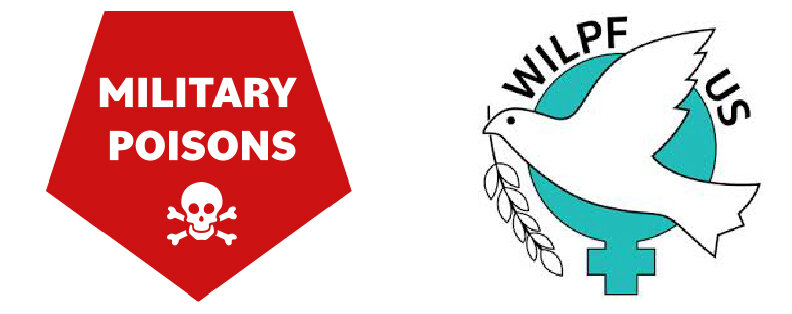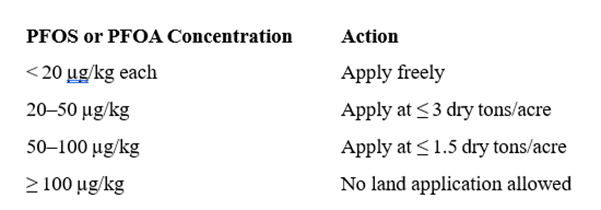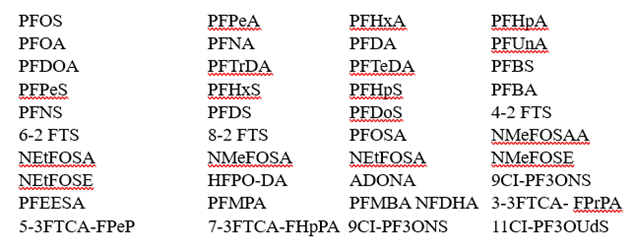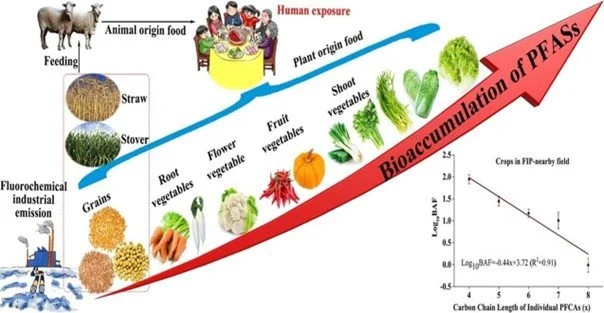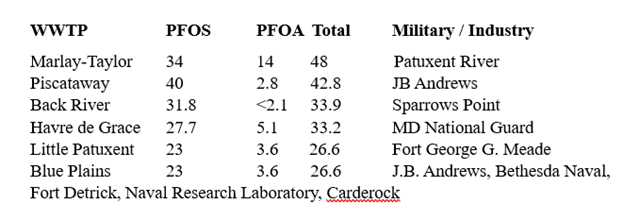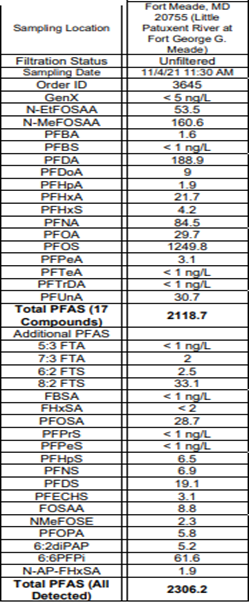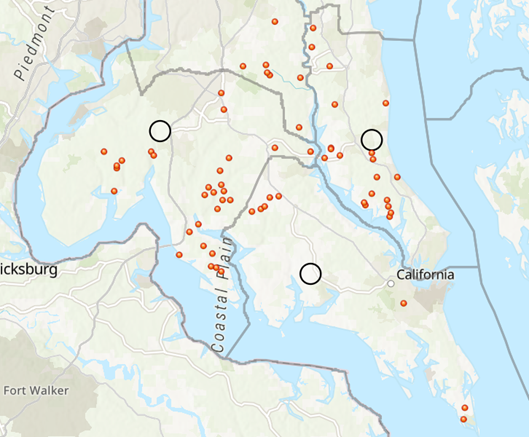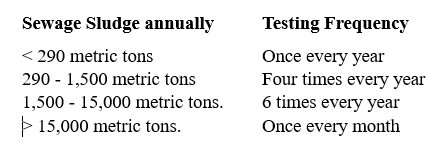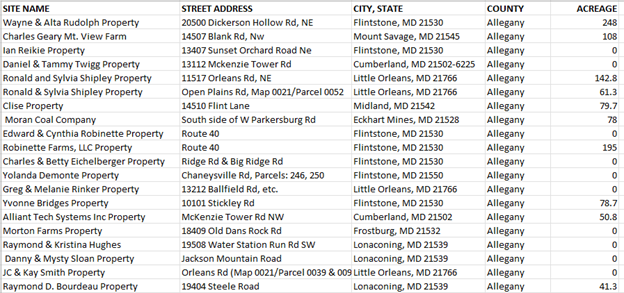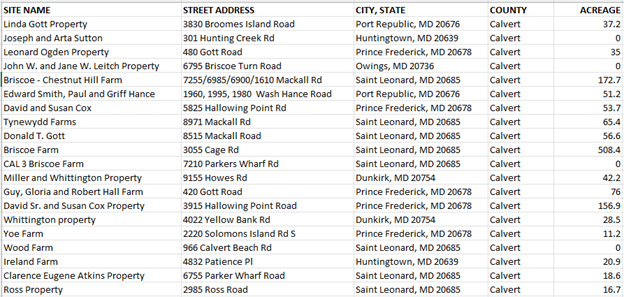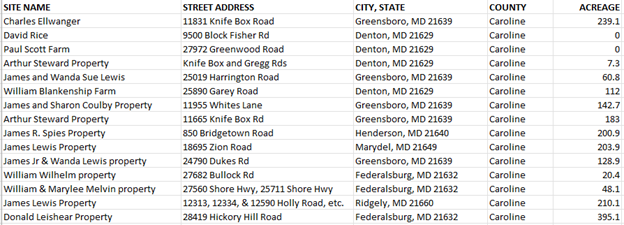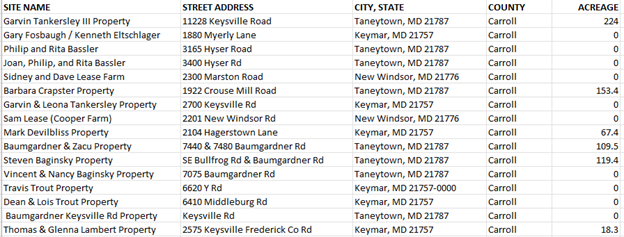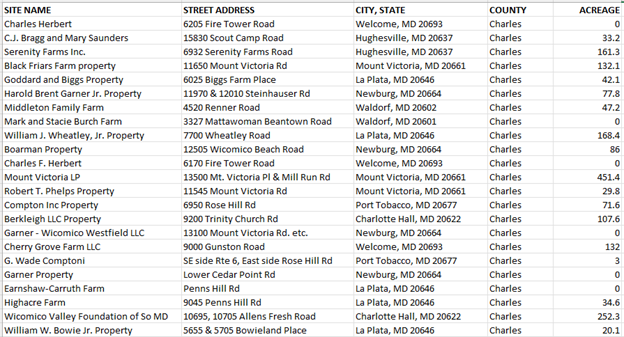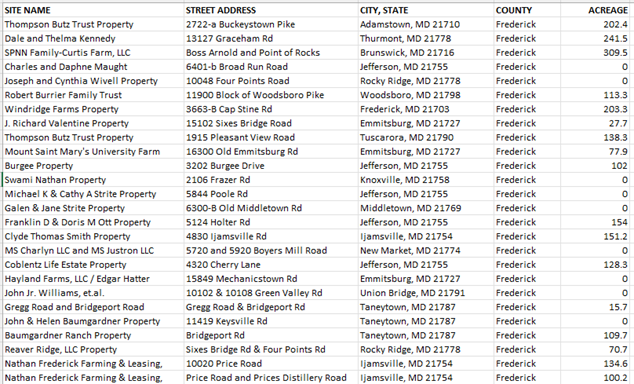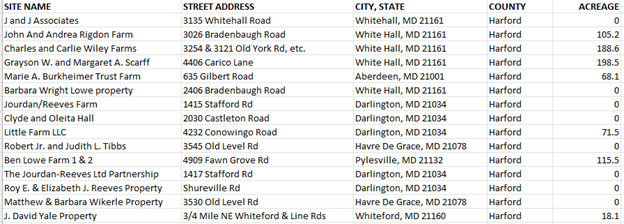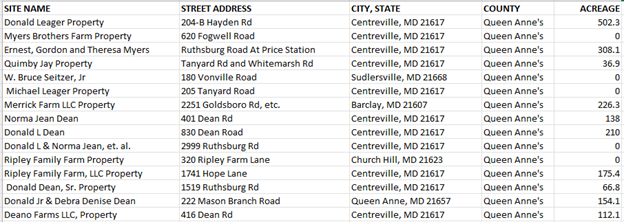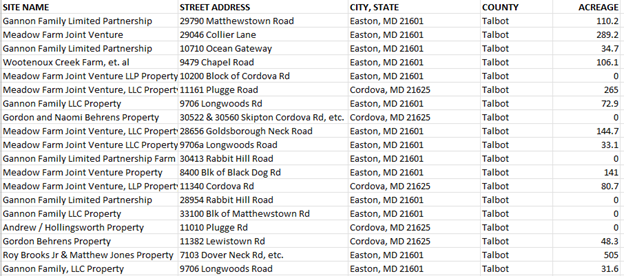Toxic Sewage Sludge in Maryland
By Pat Elder
July 14, 2025
Spreading sewage sludge on fields in Maryland.
This report exposes the serious and growing threat that PFAS-contaminated sewage sludge poses to human health in Maryland. We uncover the failures of both the U.S. Environmental Protection Agency and state regulators to adequately respond to this crisis, allowing toxic chemicals to be spread across farmland with minimal oversight. Our investigation maps every known site in Maryland where sludge is applied, revealing the scale of potential exposure to these dangerous compounds. We also trace the source of some of the most extreme contamination to military installations, whose legacy of pollution has gone largely unaddressed. Finally, we break down the disturbing chemistry of PFAS—synthetic substances engineered to resist degradation, now infiltrating soil, water, and the human body with alarming persistence.
The U.S. EPA’s Sewage sludge risk assessment concluded that applying sewage sludge containing as little as one part per billion of certain PFAS compounds to farmland can pose unacceptable health risks. These risks are not marginal—the agency noted they could be “several orders of magnitude” above acceptable levels for individuals consuming crops or livestock raised on such land, or for those relying on well water drawn from affected areas.
The sober warning from the EPA was published in the Federal Register just five days before the end of the Biden Administration. The assessment by the EPA highlights a stark contrast with Maryland’s current policy, which allows PFOS or PFOA concentrations up to 100 parts per billion in sludge applied to agricultural soils.
(Parts per billion is the same as micrograms per kilogram,
which is the same as ug/kg. 100 ug/kg = 100,000 parts per trillion.)
Spreading PFAS in Sludge in Maryland
Maryland Department of the Environment
Tiny concentrations in soil can lead to contamination of groundwater and uptake by plants and animals. Once in the food chain or water supply, these compounds are linked to a range of serious health outcomes—including multiple cancers, immune system suppression, developmental and reproductive harm, and metabolic disorders.
The Biden era EPA warned the findings show that the cumulative, long-term effects of land-applying PFAS-laden sludge is far more dangerous than previously assumed, although the EPA has been reluctant to formulate and mandate regulations on anything aside from PFOS and PFOA levels in drinking water. Those levels are set at 4 parts per trillion, far above concentrations many scientists say is safe.
Most states do not regulate PFAS in sludge, while the discrepancy between federal risk assessments and state-level limits such as Maryland’s suggests that current regulatory thresholds significantly underestimate the true risks to human and environmental health. The practice of spreading toxic sludge containing PFAS and a host of other toxins on agricultural fields must be banned.
==============
With support from veterans impacted by the severe contamination at Fort Ord, California, we’ve raised $8,000 to purchase
environmental testing kits. I plan to travel there this fall to test for a range of toxic pollutants. Your help can make this
mission possible. I will publish a full report detailing every dollar raised and spent. Please consider donating.
==============
It gets worse
According to the Potomac Riverkeeper Network of the 21 wastewater treatment plants with sludge tested, Maryland examined PFOS and PFOA, along with 38 other PFAS compounds present in the sludge. The sludge from these 21 plants is regularly allowed to be spread on farms in Virginia.
The data demonstrate a range of sludge contamination by PFOS of 2,110 to 30,200 parts per trillion (ppt) with a mean value of 12,452 ppt.
PFOA ranged from 0 to 9,780 ppt with a mean value of 3,652 ppt.
For all PFAS compounds tested, Maryland’s data show a range of 48.96 ppb to 330.68 ppb with a mean value of 154.82 ppb in the combined total of all 40 PFAS. Almost all the focus in the U.S., Europe, and Japan is on PFOS and PFOA, although many of the compounds shown here exhibit similar impacts to human health.
40 PFAS compounds reported in Maryland’s sludge
The sludge contained an average of 154,820 ppt for all 40 PFAS shown here.
PFAS are excreted from the human body primarily through urine and feces. Fecal matter and toilet paper make up almost half of the sludge. Urine is the main route of elimination for many PFAS, particularly the short-chain varieties. Long-chain PFAS such as PFOA and PFOS tend to be reabsorbed by the kidneys, significantly slowing their elimination from the body. They also accumulate in the liver, where they may cause metabolic and toxic effects.
The public is largely clueless about any of this. These chemicals are deadly, they are in our food, and they never go away. PFAS compounds are a threat to all of us in Maryland. See the likely health effects of 4 of the 40 obscure PFAS compounds from above.
PFAS Compound Associated or Suspected Health Effects
5:3 FTCA-FPeP Liver toxicity, immune suppression, metabolic disruption
7:3 FTCA-FHpPA Liver and developmental toxicity, endocrine effects
9Cl-PF3ONS (F-53B) Thyroid hormone disruption, liver/kidney damage
11Cl-PF3OUdS Chronic liver/kidney toxicity, endocrine disruption
____________________________________________________
There is evidence of a strong link between PFAS exposure and non‑alcoholic fatty liver disease, NAFLD. The prevalence of NAFLD in the United States is 38%, having increased by 50% within the past 3 decades. A 2022 study in Environmental Health Perspectives (Liu et al.) found that adults with the highest quartile of PFAS blood levels had more than twice the odds of having suspected NAFLD compared to those in the lowest quartile. It is not a focus of the Maryland Department of Health.
Tetrafluoromethane | CF4 | is the simplest PFAS compound
PFAS is defined as any chemical that contains at least one fully fluorinated carbon atom that is not attached to a hydrogen, chlorine, or bromine atom. Who didn’t know that?
At this point, the EPA is not actively regulating any of these compounds in drinking water, sewage sludge, liquid effluent, soil, or air - although the maximum contaminant levels set for PFOS and PFOA in drinking water are set to be enforced by 2029.
States are on their own. Small communities are on their own, and so are we. See the report by Secretary of Health and Human services Robert Kennedy, Make America Healthy Again. Kennedy’s message is that people must be distrustful of corporate and government sources and learn to protect themselves. President Trump’s budget has decimated funding for public health, leaving it to the states. The EPA has delayed enforcement of Biden administration standards and has terminated $15 million in funding for PFAS research.
What’s in your lettuce?
Different PFAS compounds in sewage sludge impact grains and vegetables in different ways. Among leafy greens, lettuce, spinach, kale, endive, and cabbage consistently show the highest concentrations. On the fruit side, strawberries top the list. Grapes, cherries, blueberries, blackberries, and tomatoes have shown elevated levels especially when grown in sludge-applied soils. Washing the fruit before consumption won’t rid the food of PFAS. Cooking or boiling won’t help, either.
Research has shown that higher rates of PFAS in soil correlate to higher concentrations in food. The repeated application of biosolids to farmland can lead to the buildup of these chemicals in soil over time. PFAS can leach into groundwater, contaminating nearby drinking water wells. It may be carried via surface water runoff into nearby water bodies, contaminating the aquatic food chain, starting with the invertebrates in the sediment of contaminated bodies of water. Fish and crustaceans feed on the invertebrates. The toxins may also be lifted into the air to form carcinogenic dust that can settle on crops several miles away.
PFAS from the sludge accumulates in livestock that consume contaminated feed or water. Milk, eggs, chicken, beef, and pork are contaminated across the country. The State of Maine is ahead of the nation in meeting this particular challenge. They started by halting the application of sewage sludge on farms and that’s what we must do in Maryland.
PFOS and PFOA have been linked to a range of health issues, including kidney and testicular cancers, reproductive and developmental problems, immune system suppression, thyroid disruption, and elevated cholesterol levels. Alarmingly, these compounds can cross the placenta and be present in breast milk, exposing infants during critical developmental stages.
Special education and regular classroom teachers in St. Mary’s County are encountering more children with developmental delays, learning disabilities, and attention-deficit/hyperactivity disorders. They are all associated with PFAS exposure, along with asthma, frequent infections, and obesity.
What’s in your fertilizer?
Commercially available fertilizers made from sewage sludge are widely available at hardware stores and garden centers throughout Maryland. One prominent product is Bloom, produced by DC Water.
PFAS chemicals were measured in the soil products from nine garden fertilizers in eight states and D.C. Bloom was the most contaminated at 223,000 parts per trillion (ppt) for all PFAS tested. This is in the ballpark of Maryland data released last year showing a mean value of 154,820 ppt in the combined total of all 40 PFAS.
Bloom’s product contained 23,800 ppt of PFOA and 22,100 ppt PFOS, two of the most toxic varieties of PFAS. Marylanders buy this product to grow vegetables in their backyards that immediately become contaminated with PFAS. What’s in your fertilizer? What’s in your tomatoes? What’s in your liver?
Another major supplier of PFAS-laced sludge fertilizer, Synagro, operates biosolids processing facilities in Baltimore and Hagerstown. Synagro produces Granulite®, a pelletized fertilizer made from sludge. Farmers in Texas say Synagro’s sewage-based fertilizer tainted with PFAS poisoned their land and killed their livestock.
Additionally, Maryland Environmental Service and the Washington Suburban Sanitary Commission distribute sludge-based compost products, such as Orgro, which are sold to landscape suppliers. Maryland’s Department of Agriculture approves the products.
About 88% of Maryland’s sludge is land applied while 12% are disposed of, largely in landfills. Disposing PFAS-laden sludge in landfills results in the perpetual contamination of groundwater and surface water.
New Data on PFAS in sludge in Maryland show the military is the top polluter.
These results from a Maryland Public Information Act request show that wastewater treatment plants that service military bases have sludge with the highest levels of PFAS. Five of the six treatment plants with the highest combined levels of PFOS and PFOA receive waste streams from military bases. The military is notorious for discharging dangerous amounts of PFAS into the environment in every state.
The Marlay-Taylor Water Reclamation Facility in St. Mary’s County reported sludge with the highest levels of PFAS in the state, with 48,000 ppt of PFOS and PFOA combined. They receive wastewater from the Patuxent River Naval Air Station in Lexington Park, Maryland. The hangars and machine shops routinely send PFAS-contaminated liquids down the drain. PFAS is used in a host of industrial processes on the base.
We saw Maryland’s data had a mean value of 154.82 ppb. for all 40 PFAS compounds with an average of 12.45 ppb for PFOS and an average of 3.65 ppb for PFOA.
PFOS comprised about 8% of the total, while PFOA made up about 2%. Together, they make up about 10%, meaning that the 48,000 ppt for the two compounds at Marlay-Taylor may suggest that Marlay-Taylor’s total for all PFAS tested may be as high as 480,000 ppt for all 40 compounds. We hope to find out when we receive our next batch of results from the MDE.
The analysis method used by Maryland (EPA Method 1633) can detect up to 40 different PFAS in biosolids, although Maryland law only requires PFOS and PFOA testing.
Military Bases in Maryland
As shown above, Joint Base Andrews discharges wastewater to Blue Plains and Piscataway. It also discharges to the Western Branch WWTP, near Upper Marlboro. It releases liquid effluent into the Patuxent River. J.B. Andrews is likely to create the greatest totals of PFAS-laden sludge and effluent because it discharges to three facilities. Otherwise, Marlay-Taylor in St. Mary’s County is the single worst treatment plant in this regard.
Fort George G. Meade has its own wastewater treatment plant operated by American Water Operations and Maintenance, LLC. I found 2,306.2 ppt of total PFAS concentrations in the Little Patuxent River below this sewer outfall. It’s not surprising their sludge is also highly contaminated. It’ll be good to compare these results with the sludge results.
The Army’s Aberdeen Proving Ground WWTP is conspicuously missing. MDE lists 67 Major WWTP’s but I only received info on 46.
Fort Detrick operates its own wastewater treatment facilities to handle highly sensitive biowarfare research activities. Fort Detrick houses the U.S. Army Medical Research and Development Command, the U.S. Army Medical Research Institute of Infectious Diseases, and the National Biodefense Analysis and Countermeasures Center.
The treated water is typically discharged into Carroll Creek, a tributary of the Monocacy River. Carroll Creek flows through downtown Frederick.
Back River is the third most PFAS-polluted treatment plant in Maryland. Back River pumps its “treated” sewage 6 miles to Sparrows Point for “industrial reuse.” Sparrows Point discharges sewage into the bay. It wouldn’t hurt to get out there in a kayak to do some testing.
This is where the Maryland Department of the Environment must significantly step up. The agency should be testing fish at known military and industrial contamination hotspots and must begin monitoring and publicly reporting PFAS levels in Chesapeake blue crab. Its failure to do so amounts to willful negligence.
Waterkeeper sludge map
https://www.potomacriverkeepernetwork.org/md-biosolids-permit-app-map/
The maps here shows the location of sludge that is spread on farms in Southern Maryland.
In 2023, the MDE banned the issuance of new sludge land application permits and out-of-state biosolids marketing permits. It’s a small step in the right direction. Since early 2025, all wastewater treatment plants where land applied biosolids originate, are required to sample for PFOS and PFOA in its biosolids prior to land application.
Maryland Department of the Environment
This is not the right approach to this problem. Sludge must be tested monthly at all facilities regardless of tonnage.
Connecticut recently joined Maine in banning the land application of sludge. Other states—New York, Michigan, Minnesota, Massachusetts, New Hampshire, and Colorado—are beginning to regulate the toxic chemicals it contains. We’ve unleashed something beyond our control, like Pandora’s box, like Icarus soaring too close to the sun. It’s time for Maryland to confront the PFAS crisis with the seriousness it demands.
Properties where sludge is spread in Maryland, by county
18 Maryland counties have farms that allow sludge to be spread. The Chesapeake Bay Foundation reports that landowners may be paid to accept sludge.
Baltimore, Somerset, Washington, Wicomico, and Worcester counties do not have farms where sewage sludge is applied. A listing of farms where sludge is spread is presented below by county. Property owners, street addresses, and acreage are provided. Thanks to the Potomac Riverkeeper for this data.
Allegany County Sludge
Anne Arundel County Sludge
Calvert County Sludge
Caroline County Sludge
Carroll County Sludge
Cecil County Sludge
Charles County Sludge
Dorchester County Sludge
Frederick County Sludge
Garrett County Sludge
Harford County Sludge
Howard County Sludge
Kent County Sludge
Montgomery County Sludge
Prince George’s County Sludge
Queen Anne’s County Sludge
St. Mary’s County Sludge
Talbot County Sludge
Washington County Sludge
